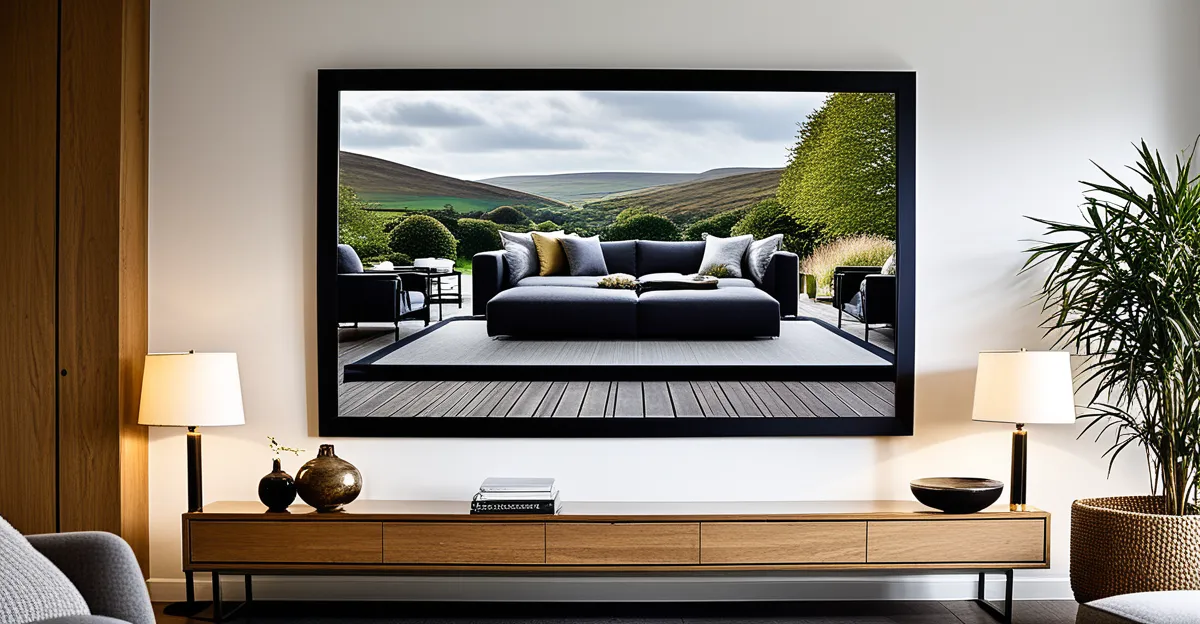Trending UK Interior Design Styles for 2023
The UK interior design scene is in constant flux, with popular styles of 2023 pushing the boundaries of traditional norms. Staying updated with these UK interior design trends is crucial for homeowners looking to continually improve their living spaces and ensure they reflect current aesthetics. Whether motivated by a desire for change or to enhance property value, understanding the emerging aesthetics can guide individuals in making informed design decisions.
Cultural shifts play a pivotal role in defining these trends. With people increasingly seeking authenticity and personal expression, design styles are evolving to accommodate such values. Each trend tells a unique story influenced by environmental consciousness, technology, and a blend of old and new world charm. By exploring these styles, one can effectively create a home that not only looks good but also aligns with contemporary principles.
Also to see : How Does Your Home’s Decor Influence Your Happiness?
Minimalist Style
Minimalist interior design centres on simplicity in decor and prioritises functional aesthetics. Emerging in the post-World War II era, this style draws from principles of clean lines, clutter-free spaces, and a focus on essential elements. Its historical roots are anchored in modernist art movements, known for utilitarianism and simplicity, evident in furniture with bold, geometric shapes.
To achieve a minimalist look in home spaces, start by evaluating each room’s purpose to strip away non-essential items. Incorporate neutral colour schemes and invest in multifunctional furniture pieces that offer utility without overwhelming the space. Embrace open layouts to facilitate easy movement and enhance visual tranquillity, making your home a haven of restful serenity. When selecting decor accents, opt for artwork and accessories that balance between subtlety and elegance. These small changes can transform a space into a true reflection of minimalist values, providing both comfort and style.
Also read : How Can You Transform Your UK Living Space for the Winter Months?
Biophilic Design
Biophilic interior design is all about fostering a connection between indoor spaces and the natural environment. This design philosophy emphasises nature-inspired decor, focusing on elements like indoor plants, natural light, and organic materials to enhance well-being. By incorporating features derived from nature, biophilic design seeks to create calming and restorative environments.
Key Elements of Biophilic Design
- Natural Lighting: Utilise large windows or skylights to bring sunlight into interior spaces, mimicking the natural daylight of the outdoors.
- Indoor Plants: Integrate various plants within the home to not only improve air quality but also introduce vibrancy and a sense of freshness.
- Organic Materials: Use materials such as wood, stone, and natural fibres to create a warm, tactile setting that brings the outside in.
Incorporating these elements into your home is both simple and rewarding. Adding an array of plants, from hanging vines to potted succulents, instantly transforms a room, providing vibrant hues and structural variety. Adopting furniture made from reclaimed wood or woven textiles can also enhance the tactile quality of a space, making it feel more cohesive with nature. Through these thoughtful integrations, biophilic design champions a healthy, balanced lifestyle that embraces the revitalising power of nature.
Maximalism
Maximalist interior design embodies a celebration of abundance, emphasized by bold decor choices and a free-spirited approach to layering styles. Unlike its minimalist counterpart, maximalism revels in the variety and complexity, allowing homeowners to express their personalities lavishly.
Characteristics of Maximalism
- Boldness in Design: The use of vivid colors, eclectic patterns, and statement pieces are paramount in maximalism, creating environments brimming with life and character. This might include bright wallpaper, a mix of textures in furnishings, or oversized artwork.
- Layering and Mixing Styles: A hallmark of maximalism is its embrace of diverse styles from various eras and regions, all coexisting harmoniously. This eclectic mix can bring personal stories to life, turning functional rooms into curated spaces of interest.
To implement maximalist principles in your home, start by choosing a few key focus areas such as a statement wall or a feature furniture piece. Build around these elements by incorporating varying textures and contrasting colors. Layer patterns through textiles like cushions and rugs, while merging old and new objects to create depth and intrigue. The key is to maintain a balance by ensuring the space remains cohesive amidst its opulence, making maximalism both approachable and inspiring.
Sustainable Design
In 2023, sustainable interior design has become a prominent feature in the UK, reflecting a global shift toward more eco-conscious living. By integrating eco-friendly materials into the fabric of our homes, this movement not only reduces the environmental footprint but also enhances the health and well-being of occupants. Recognising the tangible benefits, such as energy efficiency and improved indoor air quality, has made green living an appealing choice for many homeowners.
Sustainable design practices in modern interiors include the use of recycled materials, low-VOC paints, and energy-efficient lighting. Furniture crafted from salvaged wood or repurposed items not only adds character to a space but also tells a story of conservation. Incorporating solar panels or smart home technology can further optimise energy use, aligning with sustainable living goals.
Creating an eco-friendly home environment doesn’t have to be complicated. Start by choosing locally sourced furnishings to decrease transportation emissions. Opt for textiles made from organic cotton or linen, and consider installing water-saving fixtures. Embracing these steps can significantly lower a home’s ecological impact while promoting a healthier lifestyle.
Retro Revival
The retro interior design trend enthusiastically embraces nostalgic decor, blending vintage aesthetics with modern touches to create timeless, inviting spaces. This trend draws inspiration from the past decades, notably the mid-20th century, where vibrant colors, bold patterns, and playful forms were dominant. Such elements are making a comeback, offering homeowners the opportunity to relive and reinterpret the charm of bygone eras in a contemporary style.
One of the core elements of retro interior design is the use of furniture and decor that transport us back in time. Iconic pieces like the Eames chair or kidney-shaped tables serve as focal points that bring a sense of history and character into modern homes.
Mixing vintage pieces with contemporary design can be both fun and functional. To successfully do this, focus on selecting key retro items that complement the existing style of your home. Consider incorporating a 70s-inspired lamp or a bold-patterned rug to introduce a splash of nostalgia without overwhelming the space.
Retro revival involves a thoughtful curation of textures and colors, balancing originality and modernity. By blending these elements, you can celebrate the old while enjoying the comfort and practicality of the new, transforming your home into a personal gallery of past and present design marvels.
Scandinavian Style
Scandinavian interior design is renowned for its combination of minimalist functionality and the comforting hygge concept, creating spaces that are both cosy and practical. At the heart of this design style is a focus on simplicity, characterized by clean lines and a neutral palette, often using light colors to maximize natural light and space. This contributes to an environment that is both airy and inviting, ideal for fostering relaxation and mindfulness.
The hygge philosophy, a Danish concept embracing warmth and comfort, significantly influences Scandinavian decor. It encourages incorporating elements that evoke contentment, such as soft textiles, warm lighting, and natural materials like wood and wool. This philosophy not only enhances the aesthetics of a room but also the well-being of its occupants, making spaces feel welcoming and lived-in.
To embrace Scandinavian sensibilities, consider using functional furniture with sleek, simple designs that emphasize practicality. Integrating textures like knitted throws or sheepskin rugs can add warmth and depth without compromising the minimalist aesthetic. Keep decorative elements minimal yet meaningful, choosing pieces that resonate personally or are crafted from sustainable materials. By blending these principles, achieving a harmonious balance of elegance and comfort in accordance with Scandinavian interior design becomes effortless.
Industrial Style
Industrial interior design is characterized by its embrace of raw materials and an urban, edgy aesthetic, making it a standout in modern home decor. This style draws inspiration from old factories and industrial spaces, giving residences an appealing roughness and authenticity.
A key appeal of the industrial style is its use of exposed elements such as brick walls, pipes, and beams, which celebrate the building’s structure. These elements are typically complemented by a neutral color palette, dominated by shades of grey, brown, and black, providing a strong yet understated backdrop for furniture and decor.
To introduce industrial touches into your home, consider incorporating materials such as metal, concrete, and reclaimed wood. These materials not only enhance the industrial feel but also add texture and depth to the interior. Lighting fixtures made from steel or iron and furniture with a distressed finish can beautifully complement the raw materials. Moreover, open-plan layouts, reminiscent of warehouse environments, foster a spacious atmosphere while accentuating the style’s minimalist tendencies. Adopting industrial design elements can transform your space into a modern haven that pays homage to its rugged roots.





